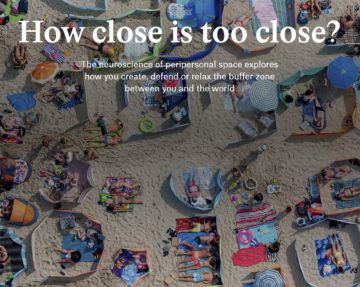Frédérique de Vignemont in Aeon:
 Heini Hediger, a noted 20th-century Swiss biologist and zoo director, knew that animals ran away when they felt unsafe. But when he set about designing and building zoos himself, he realised he needed a more precise understanding of how animals behaved when put in proximity to one another. Hediger decided to investigate the flight response systematically, something that no one had done before.
Heini Hediger, a noted 20th-century Swiss biologist and zoo director, knew that animals ran away when they felt unsafe. But when he set about designing and building zoos himself, he realised he needed a more precise understanding of how animals behaved when put in proximity to one another. Hediger decided to investigate the flight response systematically, something that no one had done before.
Hediger found that the space around an animal could be partitioned into zones, nested within one another, and measurable down to a matter of centimetres. The outermost circle is what’s known as flight distance: if a lion is far enough away, a zebra will continue to graze warily, but any closer than that, the zebra will try to escape. Closer still is the defence distance: pass that line and the zebra attacks rather than fleeing. Finally, there’s the critical distance: if the predator is too close, there’s nothing to do but freeze, play dead and hope for the best. While different species of wild animals have different limits, Hediger discovered that they’re remarkably consistent within a species. He also offered a new definition of a tame animal, as one that no longer treats humans as a significant threat, and so reduces its flight distance for humans to zero. In other words, a tame animal was one to which you could get close enough to touch.
Like all animals, humans also protect themselves from potential threats by keeping them at a distance. Those of us beginning to see friends again after months of pandemic-induced social distancing can feel this at a visceral level, as we balance the desire for contact against a sense of risk. Once we evaluate something as a potential threat – even if that assessment is informed by public policy or expert prescription – there’s a powerful urge to maintain a buffer of space.
More here.
